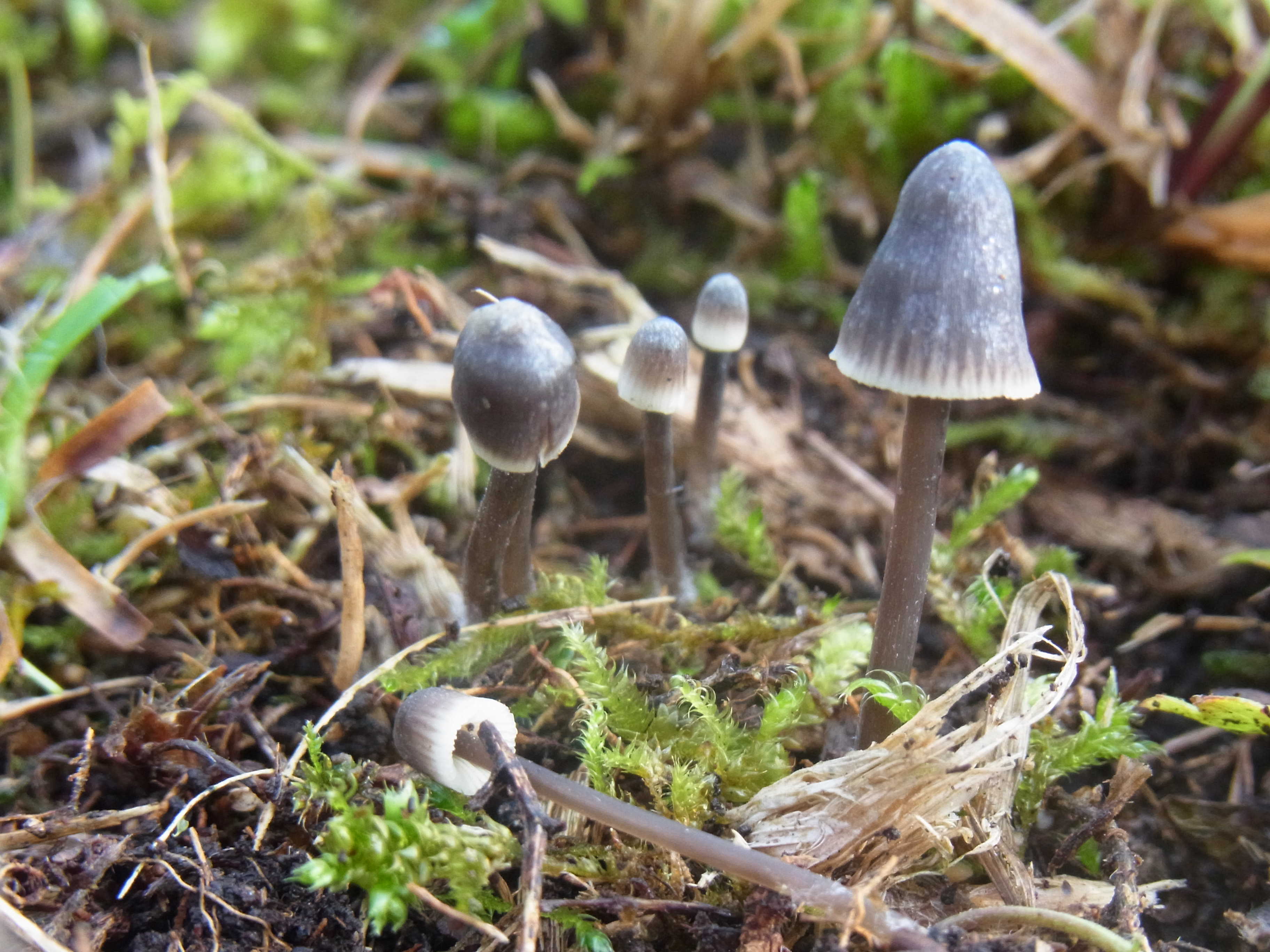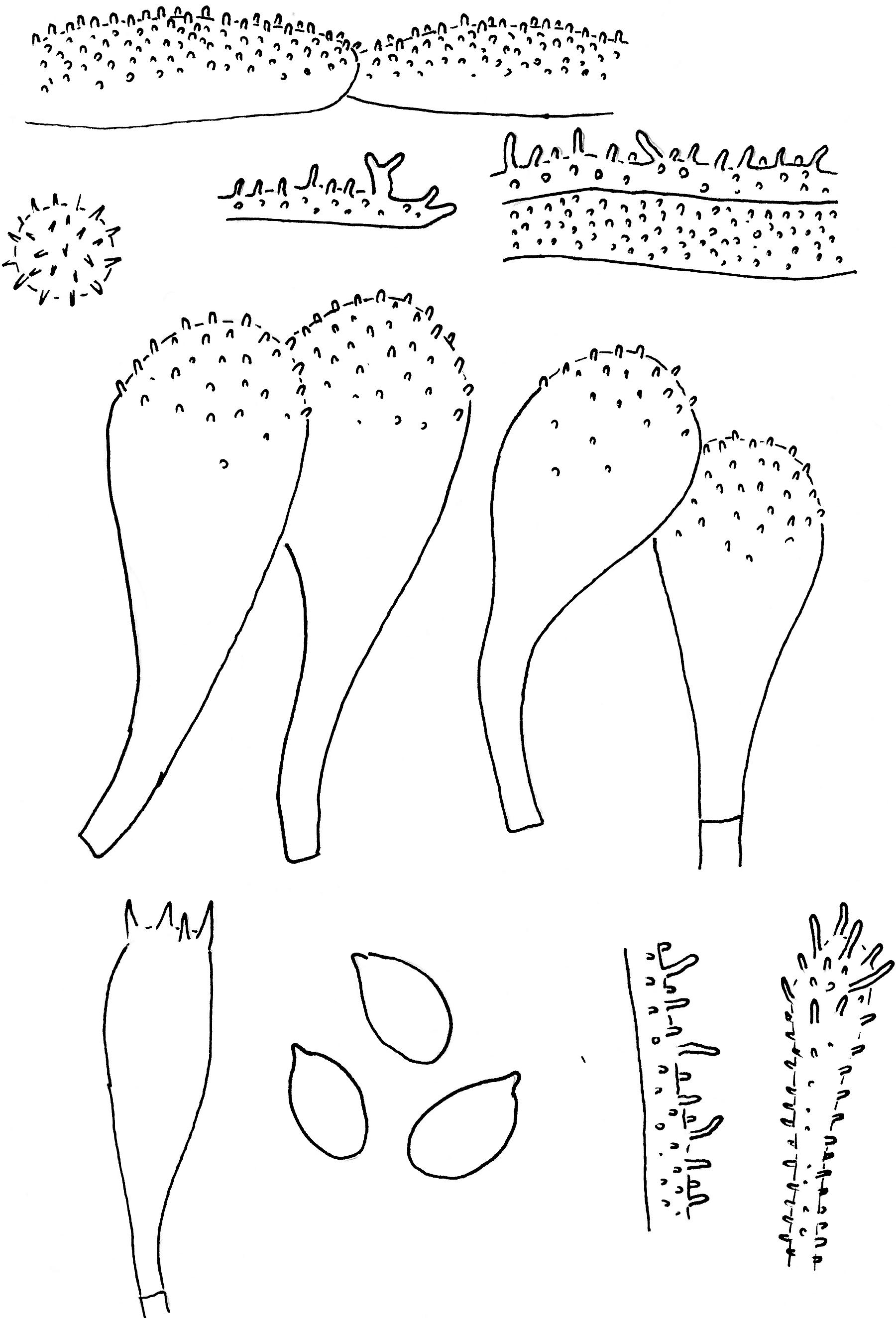Mycena rapiolens
Mycena rapiolens
Description
Hyphae of the pileipellis, cheilocystidia, basidium, spores and hypha of the cortical layer of the stem with terminal cell.
Cap 3-18(-20) mm across, conical to parabolical, without or with a small umbo, sulcate, translucent-striate, hygrophanous, blackish brown, sepia brown or fairly dark grey-brown to dingy pale brownish, margin brownish cream to brownish white. Gills 16-24 reaching the stem, adnexed, at times dorsally intervenose, cream with some sepia shade, pale greyish brown, dark grey to whitish, edge concolorous or paler. Stem 30-60 x 0.5-1,5 mm wide, firm, cylindrical, equal, glabrous, brownish white to pale brownish above, grey-brown to sepia brown below, at the base covered with coarse, long, flexuous, whitish fibrils. Odour and taste raphanoid, sometimes very pronounced, sometimes weak. Basidia 26-35 x 6.5-10 µm, clavate, 4-spored, with sterigmata up to 5 µm long. Spores 7-10.5 x 4.5-5.5 (-6.5) µm, pip-shaped, amyloid. Cheilocystidia 30-70(-80) x 12-30 µm, forming a sterile band, clavate, mostly long-stalked, densely covered with evenly spaced, short, cylindrical excrescences. Pleurocystidia similar, not numerous. Lamellar trama dextrinoid. Hyphae of the pileipellis 2-17(-20) µm wide, densely covered with short, narrow, straight to curved, cylindrical excrescences 0.5-2 x 0.5 µm. Among the hyphae are present some druze-formed elements, about 8 µm wide. Hyphae of the cortical layer of the stem 2-8 µm wide, densely covered with cylindrical excrescences 1-5 x 0.5-1 µm, terminal cells narrowly clavate, diverticulate. Clamps absent or very rare.
Ecology and distribution
Gregarious among mosses and fallen needles of Picea. Very rare.


